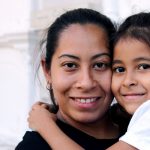- Adverse Childhood Experiences and Sleep Disturbances Among Puerto Rican Young Adults
Sleep quality is a known marker of overall health and is a chronic health issue in the US.1,2 In addition to the racial and ethnic disparities affecting sleep quality, studies suggest that adverse childhood experiences (ACEs) are associated with sleep disturbances and other chronic diseases among adults.3,4 ACEs are defined as stressful or traumatic life events that occur during the first 18 years of life.5 It is estimated that approximately 58% of youths in the US have experienced at least 1 or more ACE, with a higher prevalence of ACEs among Black and non-White Hispanic children.5–7 Our research group previously found a significant association between childhood adversity and poor sleep outcomes among Puerto Rican children.8 Although ACEs can be assessed both prospectively during childhood and retrospectively in adulthood, no previous study on ACEs and sleep quality has used both forms of reporting, to our knowledge. Despite the utility of retrospective ACEs and patient preference to be screened, both patients and physicians reported that fewer than 10% of adult patients were asked about ACEs.9,10 Furthermore, research has shown low agreement between prospective and retrospective ACEs, suggesting that these 2 forms of reporting may identify distinct groups of people with unique risk factors for various health outcomes.11,12
Compared with previous research on ACEs and sleep, our study introduces a new age group to consider: young adults. Young adults, defined as approximately 18 to 26 years of age, are an underrepresented population in research.13 Young adulthood is a critical period of complex cognitive and emotional maturation, including increased rates of risky behavior and accidental death.13 Despite the high incidence of mental and physical health issues among young adults, this population is less likely to seek health care or undergo routine screening compared with other age groups.14
Considering the disparities in research that exist for Puerto Rican young adults, as well as the promising importance of exploring both retrospective and prospective ACEs, our study examines the association of prospective and retrospective ACEs with sleep quality in a geographically diverse population of Puerto Rican young adults. Understanding this association has the potential to inform interventions to address ACEs, improve sleep quality, and reduce health disparities for Puerto Rican young adults.
Read the full paper: Olsen EL, April-Sanders AK, Bird HR, Canino GJ, Duarte CS, Suglia SF. Adverse Childhood Experiences and Sleep Disturbances Among Puerto Rican Young Adults. JAMA Netw Open. 2024;7(4):e247532.
https://journals.lww.com/psychosomaticmedicine/abstract/2024/04000/cumulative_stress_across_the_life_course_and.3.aspx
Check out a full list of previous blog posts below.
- Adverse Childhood Experiences and Sleep Disturbances Among Puerto Rican Young Adults

- Cumulative Stress Across the Life Course and Biological Aging in Adulthood

- Prevalence of cardiometabolic risk and health factors among Puerto Rican young adults

- Racial Disparities in Avoidant Coping and Hypertension Among Midlife Adults

- Tips (and a plug) for PhD accountability groups

- Social stress, epigenetics and cardiometabolic health among Latino Youth

- Immigrant-Related Policies and the Health of Youth in Immigrant Families in the U.S.

- Childhood Adversity: Sex Differences in Puberty Effects for Puerto Rican Youth

